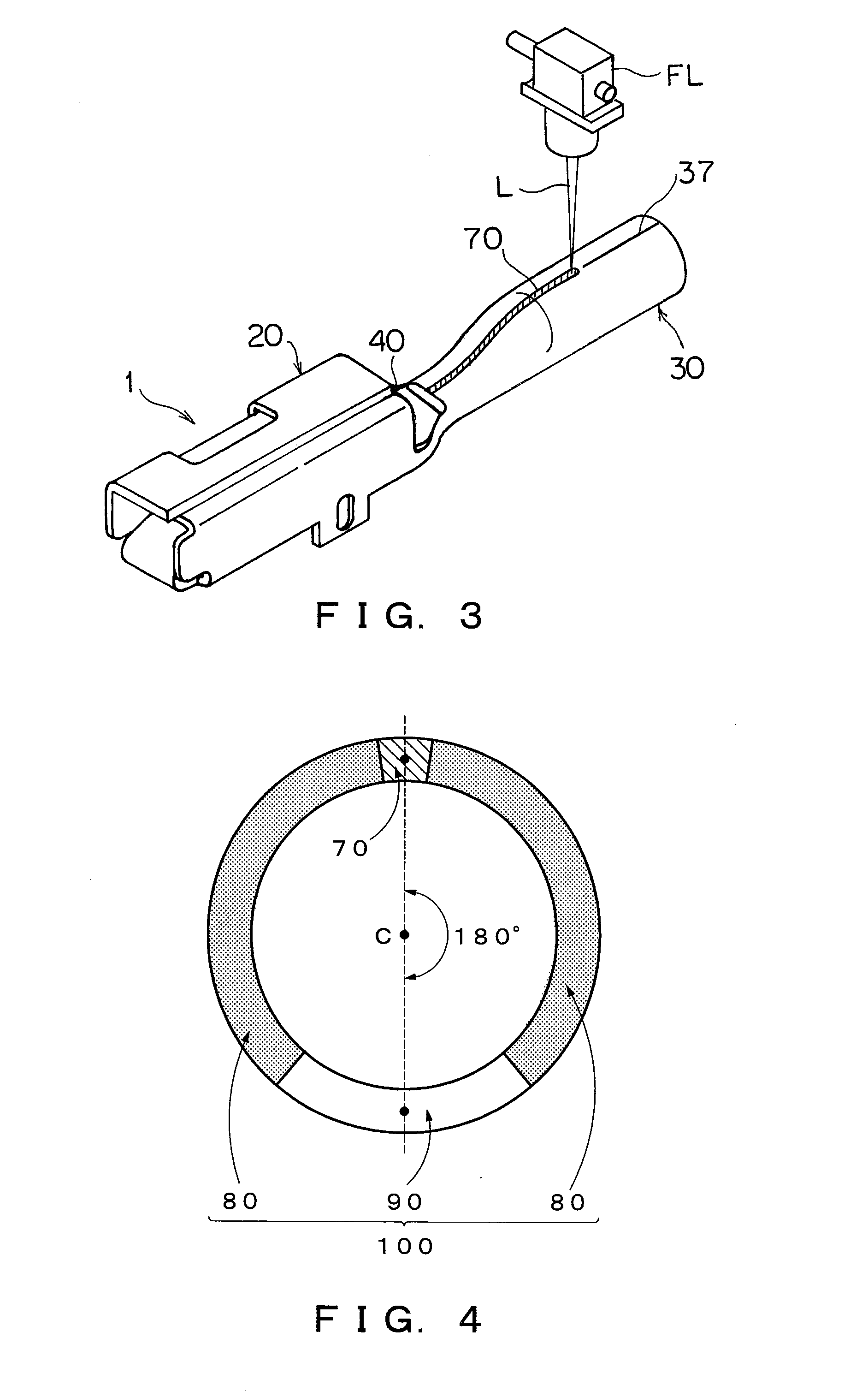Terminal, Method of Manufacturing Terminal, and Termination Connection Structure of Electric Wire
a technology of termination connection and manufacturing terminal, which is applied in the direction of manufacturing tools, contact member manufacturing, and capacitors, etc., can solve the problems of inability to avoid the influence of product life, poor contact, and progress of galvanic corrosion, so as to reduce the oxidation and corrosion of metals, reduce the cracking and springback after crimping the tubular crimp portion, and increase the durability
- Summary
- Abstract
- Description
- Claims
- Application Information
AI Technical Summary
Benefits of technology
Problems solved by technology
Method used
Image
Examples
examples
[0065]Hereinafter, test results and evaluation results of the present disclosure will be shown. Note that the present disclosure is not limited to examples related to the following tests.
[0066]A first example will be described. In the first example, a copper alloy board FAS-680 (thickness 0.25 mm, H material) manufactured by Furukawa Electric Co., Ltd. was used as the metal base material of the terminal. FAS-680 is an alloy having a composition containing 2.0 to 2.8 mass % nickel (Ni), 0.45 to 0.6 mass % silicon (Si), 0.4 to 0.55 mass % zinc (Zn), 0.1 to 0.25 mass % tin (Sn), 0.05 to 0.2 mass % magnesium (Mg), and the balance is copper (Cu) and incidental impurities. FAS-680 has a Vickers hardness of approximately 200 Hv. At least at a part of the metal base material in which the weld portion was formed, a metal member on which a tin plating was applied was used as a plating portion.
[0067]The core wire of the aluminum wire was an aluminum alloy MSAl (wire, wire size 0.43 mm) manufac...
PUM
| Property | Measurement | Unit |
|---|---|---|
| thickness | aaaaa | aaaaa |
| temperature | aaaaa | aaaaa |
| output power | aaaaa | aaaaa |
Abstract
Description
Claims
Application Information
 Login to View More
Login to View More - R&D
- Intellectual Property
- Life Sciences
- Materials
- Tech Scout
- Unparalleled Data Quality
- Higher Quality Content
- 60% Fewer Hallucinations
Browse by: Latest US Patents, China's latest patents, Technical Efficacy Thesaurus, Application Domain, Technology Topic, Popular Technical Reports.
© 2025 PatSnap. All rights reserved.Legal|Privacy policy|Modern Slavery Act Transparency Statement|Sitemap|About US| Contact US: help@patsnap.com



